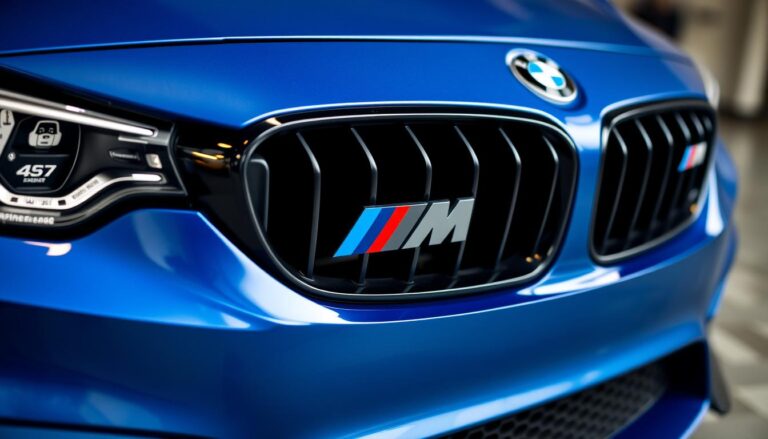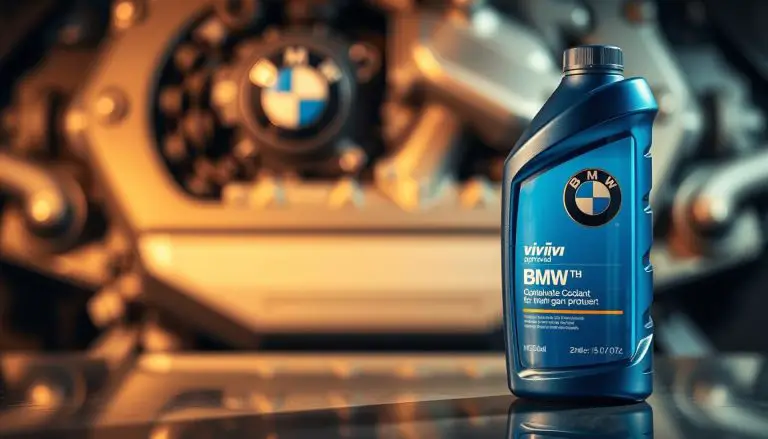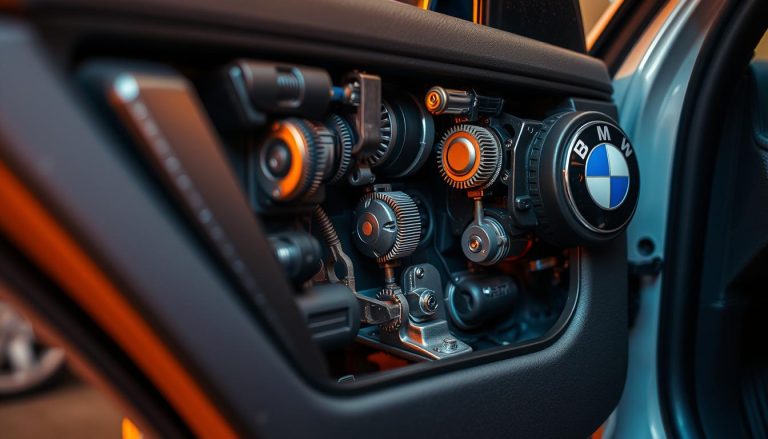The task of shifting a BMW to neutral gear without initiating the engine poses a formidable challenge for many drivers. This capability is, in fact, essential in a multitude of scenarios, including the necessity to tow the vehicle or when the battery’s functionality is compromised.
Acquiring the skill to transition your BMW into neutral without commencing the engine can significantly expedite the resolution of various vehicular predicaments. This comprehensive guide aims to elucidate the necessary steps, ensuring your proficiency in handling any unforeseen circumstances.
Key Takeaways
- Understand the importance of shifting a BMW to neutral without starting.
- Learn the step-by-step process to achieve this.
- Discover the benefits of being able to shift to neutral gear without starting the engine.
- Be prepared for situations like towing or a dead battery.
- Save time and potentially prevent further vehicle complications.
Why You Might Need to Put Your BMW in Neutral Without Starting
Several scenarios necessitate the act of placing your BMW in neutral without initiating the engine. This function transcends mere convenience, becoming imperative in a variety of contexts. These contexts span from critical emergency situations to routine maintenance endeavors.
Emergency Situations
In emergency contexts, such as the need to relocate your BMW to a secure area post-accident or in the event of a mechanical failure, the ability to shift to neutral without engine start-up proves invaluable. This is notably pertinent when the vehicle obstructs traffic flow or occupies a perilous position. Transitioning to neutral facilitates the vehicle’s safer maneuverability, thus mitigating the likelihood of additional accidents.
Maintenance Scenarios
During maintenance phases, the necessity to place your BMW in neutral without engine activation frequently arises. For example, when executing repairs necessitating the vehicle’s towing or when it must be relocated within a service bay. Grasping the mechanics of manual gear shifting in these instances can expedite the maintenance workflow.
| Scenario | Benefit of Neutral Gear |
|---|---|
| Emergency Situations | Safer handling and reduced risk |
| Maintenance Scenarios | Easier and more efficient maintenance |
| Towing Requirements | Compliance with towing protocols |
Towing Requirements
The act of towing a BMW demands adherence to specific protocols to avert potential damage to the transmission. The prerequisite of placing the vehicle in neutral for towing is critical, as it enables the vehicle’s movement without compromising the transmission system’s integrity. Adherence to the correct towing protocols is essential for maintaining your vehicle’s structural integrity.

Understanding BMW Transmission Systems
The complexities of BMW transmission systems can profoundly elevate your driving experience. BMW’s transmission technology is meticulously crafted to optimize performance, efficiency, and driving dynamics.
Automatic Transmission Basics
BMW’s automatic transmissions boast advanced technology, including multi-mode automatics and steptronic transmissions. These systems ensure smooth acceleration and optimal gear shifting, tailored to driving conditions.
The automatic transmission in BMWs is engineered to adapt to the driver’s behavior, offering a spectrum of modes from comfort to sport. This adaptability guarantees a responsive driving experience.
| Feature | Automatic Transmission | Manual Transmission |
|---|---|---|
| Driving Mode | Adaptive, with comfort and sport modes | Driver-controlled gear shifts |
| Gear Shifting | Automatic, based on speed and throttle input | Manual, via clutch and gear lever |
Manual Transmission Basics
For those who seek a more immersive driving experience, BMW’s manual transmissions offer precise gear control and a direct connection to the road.
Manual transmissions in BMWs are engineered to deliver a sporty driving experience, with gear ratios optimized for optimal acceleration.

Electronic Shifter vs. Mechanical Shifter
The transition from traditional mechanical shifters to electronic shifters represents a significant leap in transmission technology. Electronic shifters facilitate faster, more precise shifting, whereas mechanical shifters provide a more tactile driving experience.
BMW has integrated both technologies into their lineup, catering to diverse driver preferences. Electronic shifters are predominantly found in models with advanced transmission systems, enhancing performance and efficiency.
Tools and Preparation Needed
To successfully shift your BMW into neutral without starting the engine, a comprehensive array of tools and a meticulously prepared safe working environment are imperative. This preparatory phase is critical for ensuring the process is executed with both efficiency and safety.
Essential Tools for the Process
The acquisition of correct tools is paramount. Typically, a basic toolkit consisting of a flathead screwdriver and potentially a trim removal tool, contingent upon the BMW model, is requisite. Consultation of your owner’s manual or a repair manual specific to your BMW model is advisable for a detailed enumeration of required tools.
Locating Your Owner’s Manual
The owner’s manual serves as an invaluable resource, providing model-specific instructions, including the procedure for shifting into neutral without engine start-up. In the event of manual loss, a digital version can often be accessed on the BMW website or through an online search.
Setting Up a Safe Work Environment
Position your BMW on a flat, stable surface and engage the parking brake. The advisability of having an assistant, notably if unfamiliar with the process, cannot be overstated. Prioritizing safety is paramount when engaging in vehicle maintenance.
| BMW Series | Essential Tools |
|---|---|
| 3 Series | Flathead screwdriver, Trim removal tool |
| 5 Series | Flathead screwdriver, Owner’s manual |
| X Series | Trim removal tool, Safety gloves |
Safety Precautions Before Shifting to Neutral
When engaging in the intricate task of shifting your BMW to neutral without ignition, safety must be paramount. Adequate preparation and knowledge of essential precautions can markedly diminish the likelihood of accidents or harm to your vehicle.
Securing the Vehicle
Initiating the process of shifting your BMW into neutral necessitates a thorough vehicle securing. This entails activating the parking brake and confirming the vehicle’s position on a flat surface. For automatic transmissions, it is imperative to ensure the vehicle is in park mode prior to commencing. Manual transmission owners should engage the parking brake and consider employing wheel chocks for enhanced safety, notably on inclines.
Brake System Considerations
Grasping the intricacies of your BMW’s brake system is vital for the preparation phase of shifting into neutral. Verify the efficacy of your parking brake, as it will serve as the primary means of immobilizing the vehicle. For BMWs equipped with electronic parking brakes, refer to your owner’s manual for specific guidance. Be mindful of BMW models featuring an ‘Auto-Hold’ function; comprehend its interaction with your brake system.
What to Avoid During the Process
Several common pitfalls must be avoided when transitioning your BMW into neutral. Never attempt to shift into neutral while the vehicle is in motion, as this can result in substantial transmission damage. Excessive use of the shift lock release or override mechanism should be avoided, as it can accelerate wear on the shifter and transmission components. Lastly, never disregard the instructions in your owner’s manual, as they provide model-specific guidance essential for a safe and successful outcome.
Adherence to these safety measures will significantly reduce risks and ensure a secure and efficient transition to neutral without engine start-up.
How to Put a BMW in Neutral Without Starting the Engine
To place your BMW in neutral without initiating the engine, adherence to a series of straightforward actions is imperative. This capability is vital in scenarios necessitating towing or the execution of maintenance operations.
Accessing the Shifter Override Mechanism
The shifter override mechanism, a distinctive feature within BMWs, empowers the transmission’s neutral positioning even in the absence of engine operation. The initial step involves identifying its location, typically adjacent to the gearshift.
Steps to access the shifter override mechanism:
- Ensure your BMW is positioned on a level surface and apply the parking brake.
- Locate the shifter override mechanism near the gearshift.
- Consult your owner’s manual if the location remains ambiguous.
Using the Shift Lock Release Button
The shift lock release button, a pivotal element, facilitates the transition of your BMW into neutral without engine activation. This button is commonly situated proximal to the gearshift or within the center console.
Steps to use the shift lock release button:
- Press and hold the brake pedal.
- Locate the shift lock release button and press it.
- While maintaining the button’s depression, maneuver the transmission into neutral.
Confirming Neutral Status
Post-transition into neutral, verification of the transmission’s status is paramount. This can be achieved by inspecting the gear indicator on your dashboard or center console.
| Indicator | Status |
|---|---|
| N | Neutral |
| P | Park |
| D or S | Drive or Sport Mode |
By meticulously adhering to these directives, you can ensure a safe and efficient transition of your BMW into neutral without engine commencement.
Specific Instructions for Different BMW Models
The act of placing a BMW in neutral without initiating the engine varies significantly across various models and series. This disparity stems from differences in transmission systems, shifter mechanisms, and electronic controls. It is imperative for BMW proprietors to comprehend these distinctions to ensure safe and effective neutral shifting when necessitated.
1, 2, 3, and 4 Series
BMW has introduced diverse shifter technologies across the 1, 2, 3, and 4 Series models over the years. Owners of these vehicles must discern whether their vehicle is outfitted with an electronic shifter or a traditional mechanical shifter.
Models with Electronic Shifters
Models equipped with electronic shifters necessitate the utilization of the shift lock release. This is achieved by pressing and holding the brake pedal, followed by the activation of the shift lock release button while concurrently shifting the lever to neutral.
Key steps:
- Press and hold the brake pedal.
- Press the shift lock release button.
- Move the shifter to neutral.
Models with Traditional Shifters
Models featuring traditional mechanical shifters present a more direct approach. Owners can shift to neutral by simply manipulating the shifter.
Important: Prior to attempting to shift, ensure the vehicle is securely braked.
5, 6, 7, and 8 Series
The 5, 6, 7, and 8 Series models, characterized by their larger size and luxury, possess unique procedures for shifting to neutral without engine start-up.
Standard Override Procedure
Most of these models adhere to a standard override procedure, which involves accessing the shifter override mechanism.
Steps to follow:
- Locate the shifter override slot.
- Insert a tool (as specified in the owner’s manual) into the slot.
- Press down and shift to neutral.
Special Considerations for Newer Models
Newer models may incorporate additional electronic controls that demand consideration. Always consult the owner’s manual for the most precise and current instructions.
X Series and Z Series
The X Series (SUVs) and Z Series (roadsters) exhibit unique characteristics necessitating special attention when attempting to shift to neutral without starting.
SUV-Specific Instructions
For X Series SUVs, the process mirrors that of other BMW models, with a focus on utilizing the shift lock release or override mechanism.
Z Series roadsters, due to their distinct design and electronic controls, may require a different procedure. It is crucial to refer to the owner’s manual for specific guidance.
By adhering to these model-specific guidelines, BMW proprietors can safely and effectively place their vehicle in neutral without engine start-up, whether for maintenance, towing, or emergency situations.
Troubleshooting Common Issues
Encountering difficulties in shifting your BMW into neutral necessitates prompt action. Familiarity with these potential obstacles can expedite their resolution.
Shifter Won’t Move
The intransigence of your BMW’s shifter may stem from the activation of the shift lock mechanism. This safety precaution is intended to avert unintended gear changes. To rectify this, you must release the shift lock. Consult your owner’s manual for model-specific guidance on this procedure.
Electronic System Errors
Electronic malfunctions can impede the shifting of your BMW into neutral. If confronted with this issue, attempt restarting the vehicle or inspect the dashboard for error notifications. Occasionally, a system reboot suffices to rectify the problem.
Dead Battery Complications
A depleted battery can hinder the shifting of your BMW into neutral. In such scenarios, you might need to jump-start the vehicle or employ a battery pack to facilitate the necessary systems’ operation. Your owner’s manual will provide detailed instructions on jump-starting procedures.
When to Seek Professional Help
If the aforementioned remedies fail to resolve the issue, it is advisable to seek professional help. A certified BMW technician can identify and rectify any underlying issues hindering the vehicle’s ability to shift correctly.
By grasping these common issues and their solutions, you enhance your capacity to troubleshoot effectively when attempting to shift your BMW into neutral.
Moving Your BMW After Shifting to Neutral
Upon shifting your BMW into neutral, you are poised to relocate it via various methods. The selection of method hinges on the prevailing circumstances and the availability of resources.
Manual Pushing Techniques
In scenarios where your BMW is situated in a secure location and its weight is manageable, manual pushing emerges as a plausible alternative. It is imperative to possess a clear path and sufficient personnel to facilitate the safe movement of the vehicle. Always check your surroundings to preclude accidents or injuries.
For manual transmission BMWs, transitioning to neutral enables the vehicle to be propelled or towed to a preferred destination. In contrast, automatic transmission models necessitate adherence to the manufacturer’s directives to avert potential damage to the transmission.
Preparing for Professional Towing
In instances where manual pushing is impractical, the next logical step involves preparing your BMW for professional towing. Ensure your BMW is in neutral prior to any movement. Investigate local regulations and procure a towing service of repute, equipped to cater to your BMW’s unique requirements.
Anticipating the arrival of the tow truck, it is crucial to extract personal belongings from the vehicle. Also, confirm with the towing company any specific instructions or requirements pertinent to your BMW model.
Conclusion
The process of placing your BMW in neutral without initiating the engine necessitates meticulous adherence to the methodologies and precautions delineated within this discourse. An in-depth comprehension of the transmission mechanisms, the preparation of requisite tools, and adherence to safety protocols are paramount. These measures collectively facilitate a seamless execution of the task at hand.
This BMW neutral gear guide has meticulously detailed the critical steps, commencing with the activation of the shifter override mechanism and culminating in the verification of the vehicle’s neutral status. Irrespective of the context—whether an emergency, maintenance, or towing preparation—this guide has endowed you with the requisite expertise to navigate your BMW with assurance.
Adherence to the model-specific instructions and troubleshooting of prevalent issues is imperative to circumvent potential complications and guarantee the secure positioning of your vehicle. As you proceed to move your BMW post-neutral shift, it is crucial to employ manual propulsion techniques or to arrange for professional towing, as circumstances dictate.
In summation, this exhaustive guide has offered a systematic methodology for transitioning your BMW into neutral without engine start-up, underscoring the significance of safety and procedural precision. By integrating these principles into your practice, you will be well-equipped to manage your BMW across a spectrum of scenarios.
FAQ
What is the purpose of putting a BMW in neutral without starting the engine?
Engaging the neutral gear without ignition is imperative in emergency situations, during maintenance, and for towing. It ensures the vehicle’s safety and facilitates the execution of these critical tasks.
Can I put my BMW in neutral without starting if it has an automatic transmission?
Yes, the capability to shift into neutral without ignition is universal across both automatic and manual transmissions in BMWs. Utilizing the shifter override mechanism or shift lock release button enables this functionality.
What are the essential tools needed to put a BMW in neutral without starting?
The tools required can vary by model, but typically, a screwdriver or other basic tools may be necessary to access the shifter override mechanism. Always refer to your owner’s manual for specific instructions.
How do I know if my BMW is in neutral?
To verify the vehicle’s neutral status, inspect the gear selector or shifter indicator. It should be positioned in the neutral slot, marked as ‘N’, confirming the gear selection.
Are there any specific instructions for putting different BMW models in neutral without starting?
Yes, each BMW model, including the 1, 2, 3, and 4 Series, 5, 6, 7, and 8 Series, and X and Z Series, has unique procedures for neutral gear engagement without ignition. It is crucial to consult the owner’s manual or model-specific sections for accurate guidance.
What should I do if my BMW’s shifter won’t move?
If the shifter is unresponsive, troubleshooting is essential. Investigate potential issues with the brake system, electronic system errors, or seek professional assistance from a certified mechanic.
Can a dead battery affect my ability to put my BMW in neutral?
A dead battery can hinder the process of engaging neutral gear, as some models rely on electronic systems for gear shifting. Jump-starting the vehicle or employing alternative methods may be necessary.
Is it safe to manually push my BMW after shifting to neutral?
Manually propelling the vehicle after shifting to neutral can be safe if executed with caution. It is vital to adhere to proper techniques, considering the vehicle’s weight and the environment’s safety.
When should I seek professional help for putting my BMW in neutral?
Professional assistance is advisable if you are uncertain about the procedure, encounter difficulties such as an unresponsive shifter, or if your vehicle’s electronic systems present complex errors beyond your expertise.


